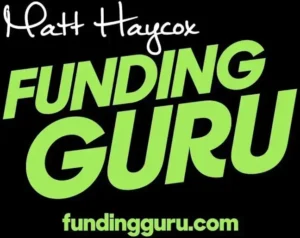Do you know how a small business loan works? Are you sure you’ve made your loan application rock solid? To help answer these questions and more, we’ve created a guide to help you understand everything you need to know about applying for a small business loan.
This guide breaks down your business loan application into three sections:
- Understanding an application from a lender’s perspective
- How to prepare & present your business
- The business loan application process
This in-depth analysis will provide guidance based on different types of lenders, as well as information regarding the importance funding puts on business planning.
Understanding a lender’s approach
In order to take the right approach when applying for a small business loan, you need to understand how business loan applications are approved by the lenders.
What is it lenders want to know about your business and how do they determine your level of ‘creditworthiness’?
Important lending criteria
You may have heard of the acronym CAMPARI (Character, Ability to Repay, Margin of Finance, Purpose, Amount, Repayment Terms, and Insurance) which relates to the criteria lenders look at when considering business loans. It is also referred to as ‘the five Cs’ (Character, Capital, Capacity, Collateral and Conditions).
Whatever you call it, these are key elements to address before you feel confident of being accepted for a small business loan.
Why different lenders have different requirements
Always pitch the right information to the right lender. Different lenders have different requirements so gauge the right approach to each.
The Banks
Bank loans can take a long time to approve – sometimes 60 days or longer to process – so be prepared for a long wait. A good credit score is essential with banks who tend to view financial lending as either black or white.
Banks look at you, your business and how your skills or experience can help it, but more importantly, how much money you and your business team have invested into it.
They need to know how much security or assets you have that can be realised and consider any other business interests and how these affect your cash flow, forecasts and current trading figures.
Banks are mostly focused on fiscal conservatism. They like to see long trading histories and solid business banking relationships. They are the most conservative of lenders which makes their process longer and yet still often end in them declining your business.
Alternative Lenders
Applying for a loan through an alternative lender can be a much quicker process. Less documentation is needed which is why loans can be agreed in minutes rather than weeks or months from the banks.
Personal and business tax returns must be included as well as your current financials and where your current debt liabilities lie.
Because funding is from either private investors or from mixed equity sources, a solid business plan and revenue forecast is required. Many investors specialise in specific industries, meaning they also see the wider industry picture of an investment opportunity.
Government Grants/Loans
There are currently 532 government-backed grant and loan schemes available in the UK. Each of which will have specific criteria attached to their applications.
Business loans backed by the government are available at the local, regional and national level and are available from either the British Business Bank or as a loan guaranteed by the government from a private bank.
The process usually requires multiple form-filling and it can take some time. Funding is often limited and grants are given priority when fulfilling specific conditions.
Credit Scoring
All of the above lenders will use credit scoring in different ways. Your credit scoring will be based upon the information held at either Experian or Equifax.
It is relied upon as evidence of your historical financial reliability. However many alternative lenders also include a lot more social and current credit data to their decision, which often means coming to different credit decisions from the banks.
Your credit score is important so it is essential to take early precautions and improving it where possible.
How Your Business Plan Benefits Your Loan Application
Regardless of who you approach for investment, your business plan is the best weapon to getting your small business loan application accepted.
Lenders like to know how and where you are going to use the money they lend, and they want to know how you intend to pay them back. Your business plan creates the structure and timeframe for it.
Getting a loan application accepted mirrors the same level of commitment you put in your long-term business goals. You need to not only persuade yourself that you mean business but potential investors too.
Your business plan should contain all the information you need to prepare a successful business loan application and it should demonstrate how you are going to invest external funding and generate the revenue needed to pay lenders back.
Preparing a solid business plan
Your business plan should be made of a number of sections, the most important are:
- Executive summary
- The management and operational team
- Business aims
- Comprehensive financial analysis
With this your business plan serves two things:
- It provides an effective roadmap for your business
- It helps you obtain external funding
There are four key steps to consider before writing a winning business plan. It will help focus who your target audience is and how much finance is needed.
Step 1 – Your business/industry
Research everything you need to know about your industry and those within it.
- Who are the main players in your industry and what are they doing?
- How does your business fit in?
- What qualifications do you have in your field?
Step 2 – Targets
An opportunity to clarify the business’ vision and create a roadmap to make it a reality. This is where you can dangle the huge carrot to potential investors (or for your own benefit).
- Are you targeting investors?
- Are you using this to motivate and plan for your own purposes?
Step 3 – Investment
If you want investment or additional funding then your plan must appeal to those you approach. Are you looking for a loan or offering share options? Make sure your communication and technical jargon are appropriate to the audience you want to attract.
– Gain trust in your business objectives
– Offer a complete understanding of your business
– Have clear financial records and projections
– Understand everyone’s return on investment (ROI)
Step 4 – Writing Your Business Plan
Your business plan should consider every aspect of your business. It is a guide for every department’s responsibility and every individual’s role within the organisation and should look something like this:
– Company Description
– Mission Statement
– Executive Summary
– Industry and Competitive Analysis
– Your Product & Services
– Target Markets
– Marketing & Sales Plan
– SWOT Analysis
– Details of Management Team & Directors (including financial stake)
– Financial Situation (including future projections)
– Investment Requirements (including future projections)
– Appendix (include other relevant information)
Key sections of the business plan
Profit & Loss Statements
You need to bulletproof these, they are the fundamental key to realising investment.
You demonstrate a clear grip on the financials of your company if these are part of your weekly/monthly financial health check. They can highlight the financial results of your company’s decisions.
Your profit & loss can demonstrate the reliability of the business, its professionalism and its ethics. It will indicate three important business parameters lenders will be considering:
Reliability – Highlight the evidence that you will be able to make your loan repayments based on your cash flow. If you don’t have it the lender will view you as high risk.
Professionalism – Lenders like detailed and full financial statements. Anything less will indicate your business is just as unorganised.
Ethics – You must be able to prove that your figures are accurate. If they are not correct or don’t add up then lenders will not have any trust in your business.
Assets
Security is important because lenders love tangible assets that help guarantee their loan will be repaid if you can’t.
The best assets are property, equipment and machinery – or anything that you hold a title against and which holds equity. But your assets can also include things like your business inventory, cash reserves or sales ledger.
The idea of collateral isn’t new. Lenders, especially the banks like to know there is some fall back on non-repayment of their money. This means knowing exactly what kind of loan you require and which lender you are approaching for it.
The Small Business Loan Application
When you apply for a loan, it’s important to get everything right the first time. Spend too long on your application and it can damage your business. So preparing your application as soon as possible plays a big part.
If you can gather the required information together before you even need to raise capital, you can expedite the application process or even manage to pre-agree a loan agreement i.e., having a loan agreed in principle places you in a strong position when you need to raise funds quickly.
At this stage it is critical you have your business plan completed and to hand. Much of the application process will refer to the same information you have already prepared for your business.
Whether you are in a position to do this or not, your loan application will need the following information:
Personal and business statements
The lender likes to see how much experience you and your business has within the industry they are considering funding. Your personal financial information might also be requested to ensure you included and explain, in detail, your own personal financial and legal situation. You can use the information from your business plan.
Loan amount
How much do you want? Don’t be too greedy but likewise don’t be too cautious either. Demonstrate what you will be using the money for and include the cost of your equipment, labour and length of project. Be sure to include any of your own financial input into your calculations – the lenders like to see your personal financial commitment alongside their investment.
Financial records
This means preparing your past, present and future business finances. Knowing your numbers is essential in your application. A well-supported loan application will scrutinise financial figures like cash flow, forecasts, revenue projections and costs.
Assets
What assets can you offer? Be clear to detail all your existing assets and holdings. This includes all your property, stock, liabilities and equity. It might help to get an independent market appraisal for your assets to show the value of your business.
Document checklist
Document requirements vary from lender to lender but if you are prepared you’ll have all of these and be more than covered:
– Business Plan
– Tax Records (personal and business)
– Income Statement
– Business Licences and Permits
– Profit & Loss Statement
– Payroll Records
– Bank Statements
– Mortgage Statement
– Leasing Documents
– Patents & Copyright Records
Whether you are applying for a small business loan through a bank or an alternative lender, the criteria of each lender might differ slightly, but the documents and requirements will remain largely similar.
Always ensure you have included the information needed by the lender; different lenders focus on different criteria, but it is your business plan which ties together your business goals with your financial projections. Lenders want to see this and you will need it throughout the loan application too.
Understanding the requirements of the lender, the business and the loan application will give you a better idea of what lenders need to consider, as well as giving you a greater insight into your business.
If you’re looking for a small business loan, we can help – even if you’ve been turned down by banks or other lenders in the past. Request a call back from one of our team members and have a FREE one-to-one no obligation consultation.




